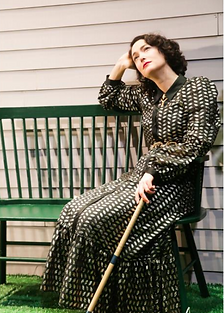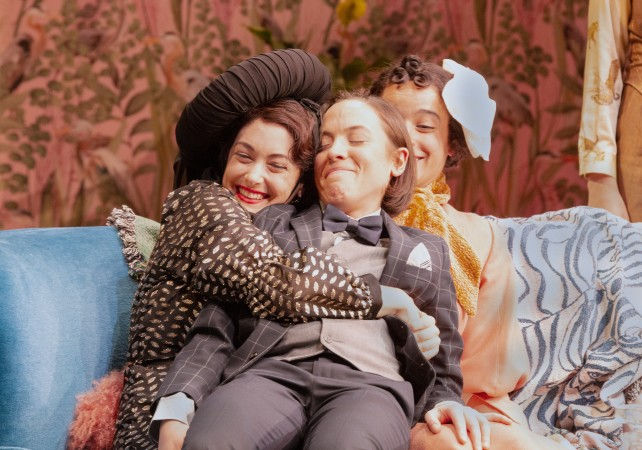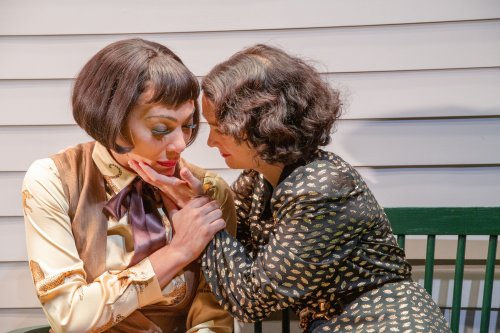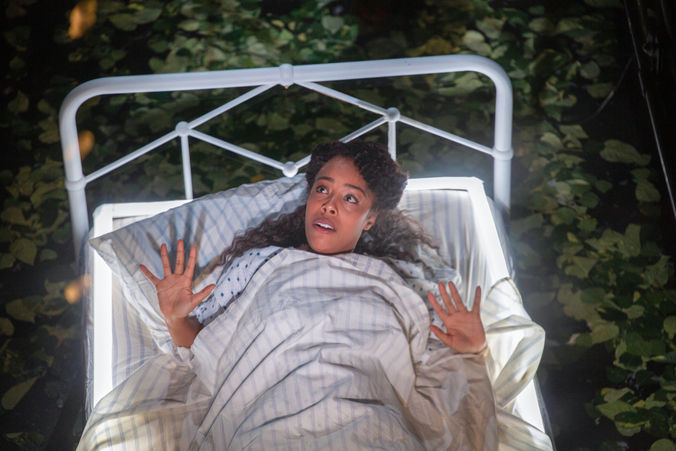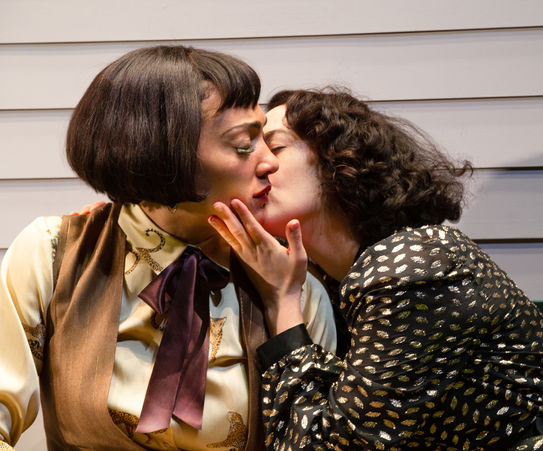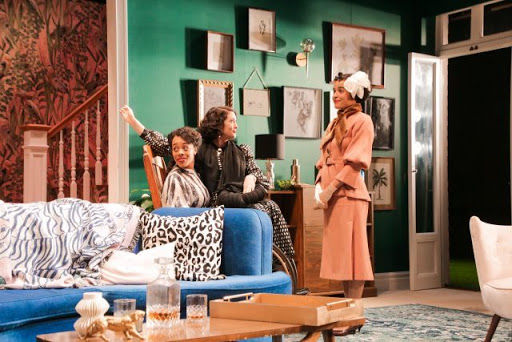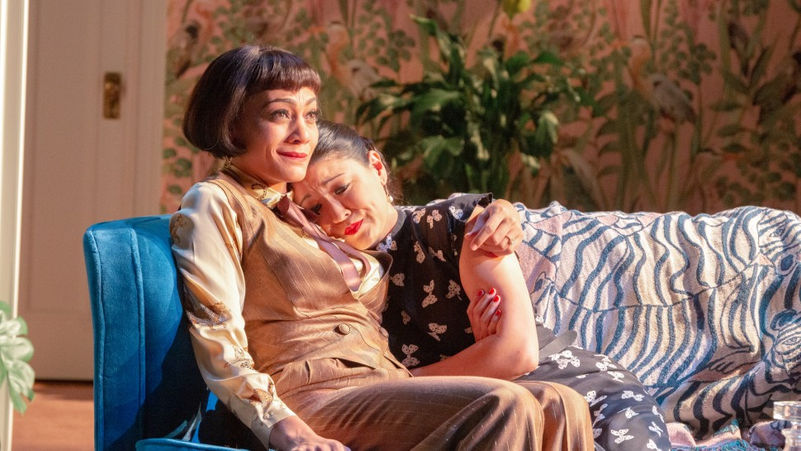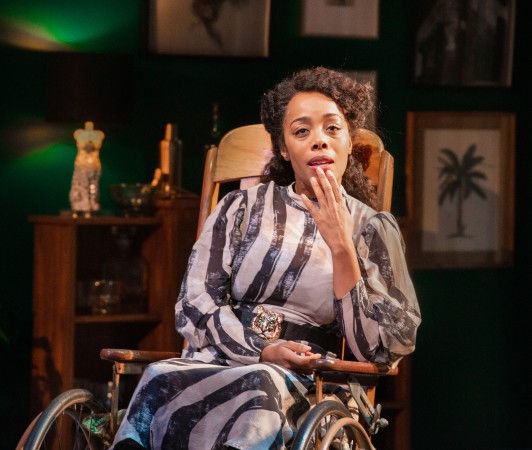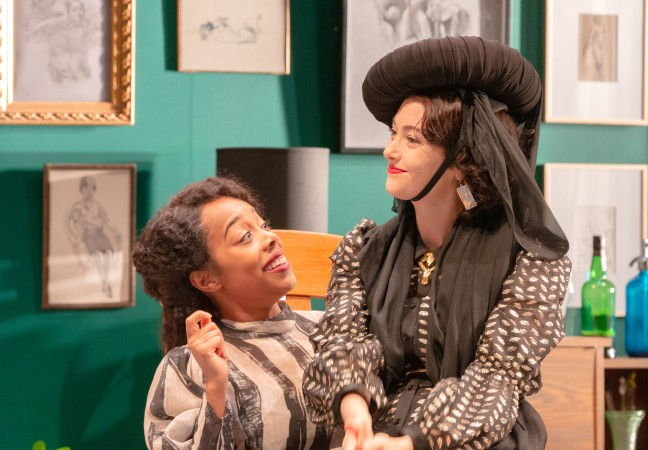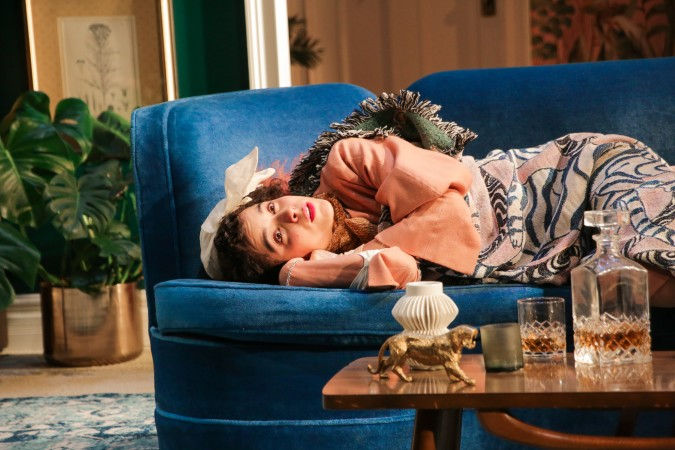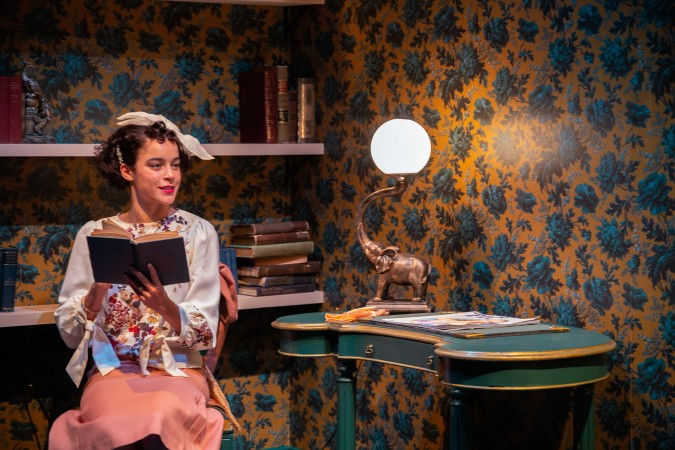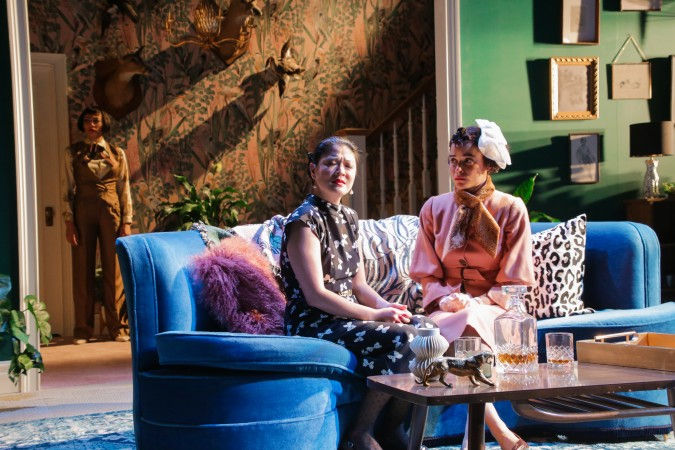
PRODUCTION HISTORY
“Could it be that Fornes is underproduced (for a writer of her stature) precisely because her characters rebel with willful opacity against American theatrical notions about the clarity of intention?” - Sarah Ruhl
New York Theatre Strategy at Relatively Media Lab | 1977
Director: Maria Irene Fornes
Set Design: Linda Conaway
Lighting Design: Candice Dunn
Costume Design: Lana Fritz
CAST
Fefu
Cindy
Christina
Julia
Emma
Paula
Sue
Cecilia
Rebecca Schull
Gwendolyn Brown
Carolyn Hearn
Margaret Harrington
Gordana Rashovich
Connie LoCurto Cicone
Janet Biehl
Joan Voukides
Fefu and her Friends was first staged not in a traditional theatre, but rather in an anonymous apartment loft in the East Village neighborhood of New York City. The play was an early experiment and example of what is now known as "site-specific theatre," a term used to denote theatre performances which take place in natural settings or locations not originally intended for theatre. Fornes had been working on the play since 1964, and as motivation to finish, she slated the production for New York Theatre Strategy's season. In her search and decision on the location, Fornes visited the Relativity Media Lab. After a tour of the space, Fornes thought that each room she had been inside could be in her imagining of Fefu's house. Of the experience, she said:
"There was this division and another division he called the green room and then the large performance area and on the other end of it was another partition he had made, and he had a beautiful little office there, Victorian furniture, beautiful desk. And when we sat down I said, 'This could be Fefu's library.' And then it hit me, and I thought I could do this play - the following scenes - in different places."
Fornes continued to work on the script with the concept of different scenes happening simultaneously in different spaces in mind. In May of 1977, Fefu and her Friends made its world premiere. The production received one review by Bonnie Marranca, who would go on to conduct several interviews with Fornes about her work. Marranca gave the production high praise and referred to it as "a joy to find." She closed her review with the observation "It feels good to see the work of an author who respects her characters and audiences."
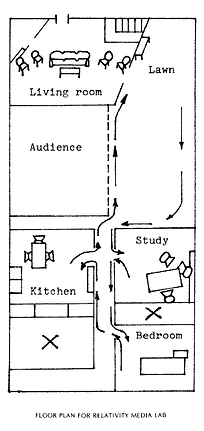

Rebecca Schull as Fefu (Photo: Rena Hansen)

Left to right (seated): Connie Cicone, Margaret Harringon, Gordana Rashovich, Gwendolyn Brown, Carolyn Hearn (standing): Rebecca Schull, Joan Voukides, Janet Biehl (Photo: Rena Hansen)
Original set design by Linda Conaway. Photos: Gene Schull
American Place Theatre | 1978
Director: Maria Irene Fornes
Set Design: Kert Lundell and Nancy Tobias
Costume Design: Theo Barnes
Lighting Design: Edward M. Greenberg
CAST
Fefu
Cindy
Christina
Julia
Emma
Paula
Sue
Cecilia
Rebecca Schull
Dorothy Lyman
Elizabeth Perry
Margaret Harrington
Gordana Rashovich
Connie LoCurto
Arleigh Richards
Judith Roberts
Maria Irene Fornes re-mounted the original production from downtown for a wider audience at the American Place Theatre in the Hell's Kitchen neighborhood of New York City. The entire design team changed, as did the majority of the cast. Rebecca Schull reprised the title role of Fefu. Fornes found places in the building to use to the kitchen, bedroom, and lawn, but the scene in the study had to be adjusted to be staged at one end of the living room.
In Richard Eder's review for the New York Times he wrote, “It is an imperfect evening but a stimulating one, and with moments of genuine splendor in it.” Even less impressed, Walter Kerr wrote in his review, "If I lasted as long as I did, it was because I kept hoping during my constant journeyings that I might find a play in the very next room.” Critics generally disagreed on the meaning of the ending and were put off by the staging of Part II.
Despite the lukewarm reviews, Fornes won a Playwriting award at the 1978 Obie Awards. In the coming years, Fefu and her Friends would become the topic of much scholarly work and analysis by theatre practitioners and theorists. While the play would not see another professional New York production until forty-one years later, it would become a popular choice for education theatre settings and go on to be performed at dozens of colleges and universities.
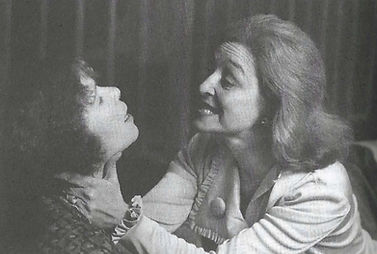
Left to Right: Margaret Harrington (Julia) and Rebecca Schull (Fefu.) Photo: Martha Holmes
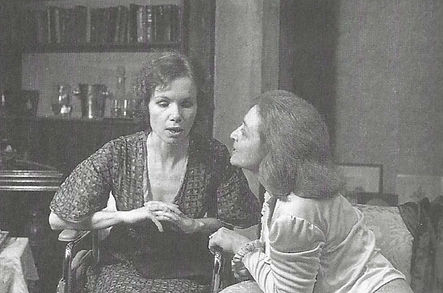
Left to Right: Margaret Harrington (Julia) and Rebecca Schull (Fefu.) Photo: Martha Holmes

Left to Right: Connie LoCurto (Paula) and Arleigh Richards (Sue) Photo: Martha Holmes
At the Foot of the Mountain | 1986
In the summer of 1986, Fornes directed a production of Fefu and her Friends with members of a feminist theatre collective called At The Foot of the Mountain. The play was staged at the Mixed Blood Theatre, an old firehouse in the theatre district in Minneapolis, Minnesota.
For this production, Fornes adjusted her concept of the staging to connect the play to not only the building, but also to the surrounding streets and area in which it was located. A fixture of many modern productions today, pre-show music was played out into the street as audience members arrived. Fornes took advantage of every aspect of the architecture of the space - doors that led to other rooms, staircases, and windows in the garage doors all were used. In Part II, Fornes adjusted the lawn scene and the study scene to incorporate the setting more fully. The study scene took place outside, with Christina and Cindy sitting in a wooden rowboat raised on blocks with the audience members surrounding them as they read and talked. The lawn scene had no need for fake grass as it was staged across the street in a vacant lot with boulders and trees. Rather than play croquet, Fefu and Emma picked vegetables from a garden. At scene's end, Fefu merely walked across the street to ask Cindy and Christina if they would like lemonade. The three-dimensional aspect of movement between spaces allowed for greater connectivity to exist and contribute to the embodiment of the experience and the text.
The concept of this particular production, while very little documentation exists, serves as proof of the flexibility of imagination possessed by Fornes, as well as the elasticity of the play itself. Fornes responded to the site that was presented to her, and adapted her direction of the play to suit the space. It also is a fully realized exploration of how to obscure boundaries between inside and outside, between the play and real life. Scott Cummings, scholar and director, observed that the production created a "volatile liminal zone that at any moment was subject to the demands of either the theater or the street." (Cummings, 73)
Yale Repertory Theatre | 1992
Director: Lisa Peterson
Set Design: Michael Vaughn Sims
Costume Design: Maggie Morgan
Lighting Design: Trui Malten
Sound Design: Jon Newstrom
Production Dramaturg: Steven Oxman
CAST
Fefu
Cindy
Christina
Julia
Emma
Paula
Sue
Cecilia
Joyce Lynn O'Connor
Kim Yancey
Sarah Long
Pippa Pearthree
Julianna Margulies
Tonia Rowe
Mary Magdalena Hernández
Camilia Sanes
As part of a season designed to celebrate experimentation with form, Yale Repertory Theatre in New Haven, Connecticut produced Fefu and Her Friends in the winter of 1992. The play was included in a festival, along with The Death of the Last Black Man in the Entire World by Suzan Lori-Parks and Democracy in America by Collette Brooks. The cast featured a mix of both professional actors and student actors enrolled in Yale School of Drama. Reviews of this production, directed by Yale College alum Lisa Peterson, were mixed. Of the process, Peterson said it was "dramaturgically unique, like archeological excavation and mathematically sometimes boggling."
In this production, the audience entered through the stage door of the building. Audience members passed a video monitor which allowed them to see themselves coming into the space and also walked by open dressing rooms as the actors prepared for the performance. The production enlisted metatheatricality as a guiding concept, however it was observed by Scott Cummings that it fell flat and "undermined the dynamic of the play." Cummings noted three main elements which contributed to this flattening: a staging strategy too clever to be effective, a coordination of audience members in the space too robotic to allow for emotion impact, and the sheer size of Yale Repertory Theatre. Yale Rep seats five hundred people, which meant that even a house at half capacity it would have divded groups of fifty people moving from scene to scene. The scale of the theatre did not allow for the intimacy of the play to penetrate the audience as much as it might have in a smaller theatre.
Program for Winter Fest | Experiments in Form Yale Repertory Theatre | 1992
Download as a PDF


Muhlenberg College | 1996
While Fornes received multiple inquiries from theatres and universities to produce Fefu and her Friends, the space requirements of staging Part II in multiple locations prevented interested companies from staging her play. In 1996, Fornes was invited to direct a production at Muhlenberg College in Allentown, Pennsylvania, and she took the opportunity to adapt her play into a one-act version which would take place in one setting.
Almost twenty years after the original production, she rewrote the four scenes in Part II to take place in the living room. She also added several entrances and exits and cut stage directions specific to the kitchen or the lawn. In Julia's scene in the bedroom, Fornes made a significant and compelling change. Rather than the original staging on a bed, Julia rests on the couch in the living room. At the height of her hallucinations, Fefu finds her and sees what she is seeing at the same time. In having Fefu react in horror with Julia, it reinforced that the women were both under attack by the same oppressive force. Devon Allen, the only faculty member in the cast as the role of Fefu, described the new writing and staging as "very fluid" and that "it felt that was the way she had written it." (Cummings, 76)
Fornes's decision (and willingness) to rework her play was considered radical, for it was rare to see a playwright unfreeze a finished play. For those who believe the multiple environments in Part II to be essential to the experience and meaning of the play, it was especially revolutionary. Beyond a demonstration of her desire to have the play reach as wide an audience as possible and address the difficulties which prevented the work from doing so, it reaffirmed Fornes's perspective that her work was never truly crystallized and always capable of evolution.
A Word on the Review to the Left
This review, a freelance article published by a small local newspaper, is not as reputable or polished as a review from the New York Times. However, it is fascinating to read a review which not only pans the production, but fails to articulate its failings without edging into language which is not-so-much critical as it is dismissive, bizarre, and potentially offensive:
"What does a woman learn from having lived? That death isn't such a bad alternative, I think. At least, the woman is half in love with easeful Death, who is the allegorical figure and is played (again, I think -- the characters all know one another, so why should they make a point of identification?) by Monica Stufft."
Theatre for a New Audience | 2019
In the winter of 2019, Fefu and Her Friends had its first professional New York production in forty-one years. Directed by Lileana Blain-Cruz, the cast featured a diverse cast of actors. The run of the show, thought to be a serendipitous pairing of director and material, was greatly anticipated by audiences. The production took place in the Polonsky Shakespeare Center within Theatre for a New Audience in Brooklyn. Ahead of the run, the New York Times ran a feature called "Get Ready for the Master Work No One Has Seen" detailing the rehearsal process of the show. Insights from contemporary playwrights Will Arbery (Heroes of the Fourth Turning) and Jeremy O. Harris (Slave Play) reinforced the reverence for Fornes held by so many in the theatre industry. Arbery wrote, "This play is stapled to my soul and it hurts. I don't have to understand it: I believe it." The production received additional press from Interview Magazine, who interviewed Blain-Cruz.
Prior to entering the theatre, audience members received wrist bands to indicate which section of the theatre to go to during Part II of the show. While the space was quite large, the design of the set allowed for intimacy, with scenes in other rooms occurring simultaneously echoing within ear shot. Julia's scene took place at the front of the stage, and she delivered her haunting scene from the bedroom below deck, while the audience looked down into the space, able to hear her with the use of headphones.
Reviews of the production were stellar. Jennifer Vanasco reported to WNYC that, "It feels like a wonderful house party where the audience gets to eavesdrop, make inferences, guess at relationships and outcomes. I can't imagine a stronger production of this important work." Many reviewers noted that the play was as fresh and relevant as ever, and lamented that it had taken so long for a production of this scale to go up.
"There is Fornes in everything. Should you not be able to get to this production, don't worry. Just go to any new play, and I promise you - Fefu will be there."
Helen Shaw | New York Magazine
